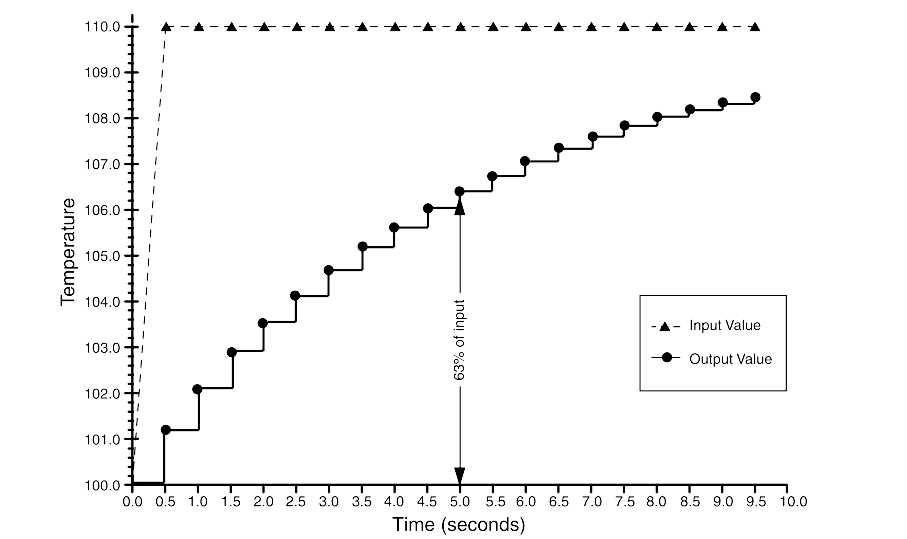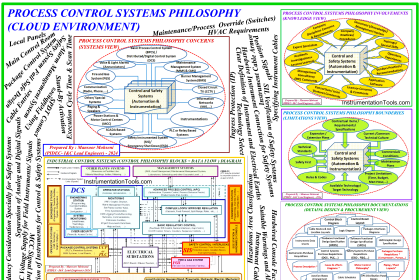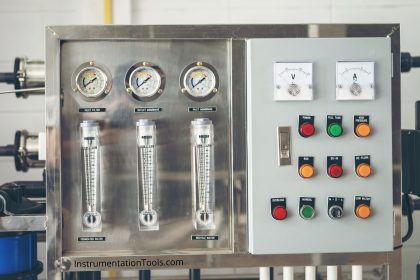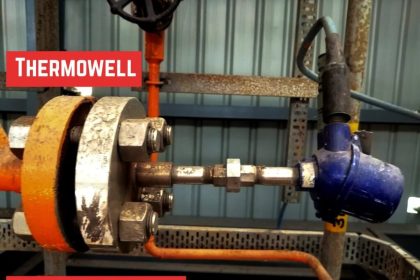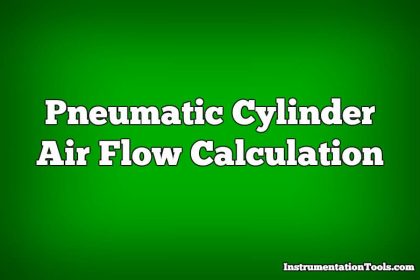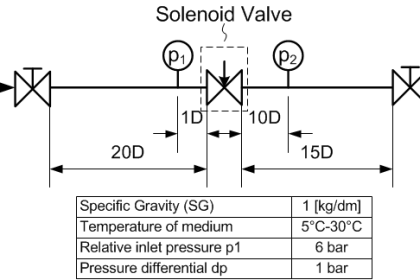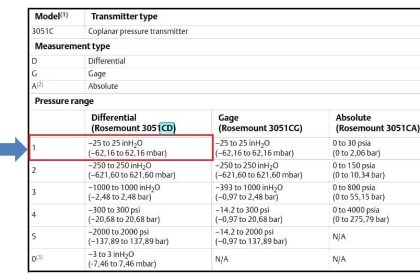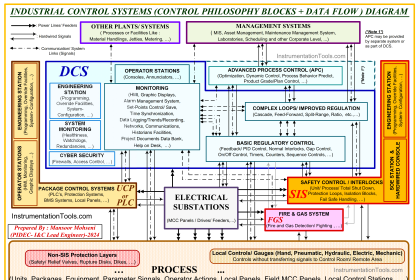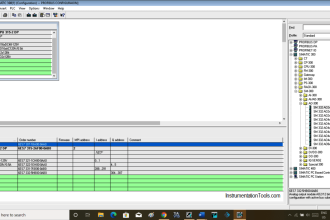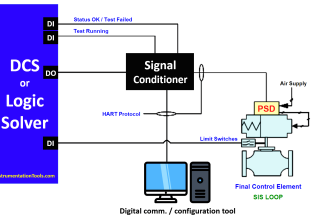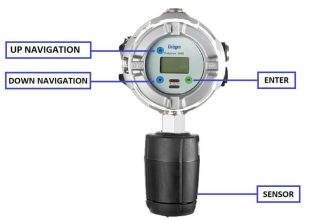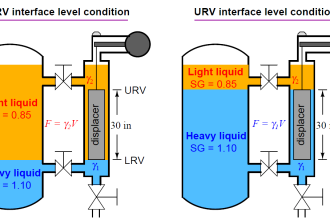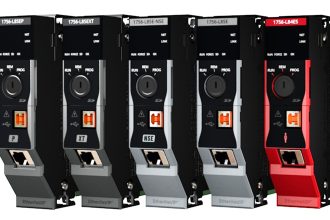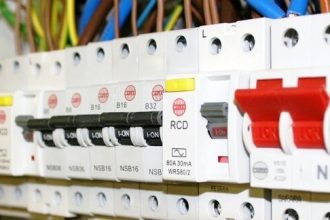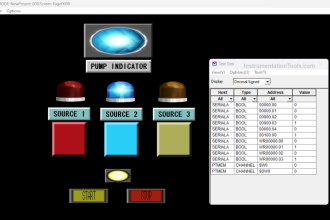Process Variable Damping
The PV Damping command of a transmitter changes the response time of the transmitter to smooth variations in output readings caused by rapid changes in input. Determine the appropriate damping setting based on the necessary response time, signal stability, and other requirements of the loop dynamics of the system.
The value chosen for damping affects the response time of the transmitter. When set to zero (or disabled), the damping function is off and the transmitter output reacts to changes in input as quickly as the intermittent sensor algorithm allows. Increasing the damping value increases the transmitter response time.
With damping enabled (say set to 5 sec ) , if the temperature change is within 0.2% of the sensor limits, the transmitter measures the change in input every 500 milliseconds and outputs values according to the following relationship:
Where,
P =previous damped value
N =new sensor value
T = damping time constant
U = constant
At the value to which the damping time constant is set, the transmitter output is at 63% of the input change and it continues to approach the input according to the damping equation above.
For example consider a temperature transmitter, as illustrated in Below Figure, if the temperature undergoes a step changewithin 0.2% of the sensor limitsfrom 100 degrees to 110 degrees, and the damping is set to 5.0 seconds, the transmitter calculates and reports a new reading every 500 milliseconds using the damping equation.
At 5.0 seconds, the transmitter outputs 106.3 degrees, or 63% of the input change, and the output continues to approach the input curve according to the equation above.
Reference : Rosemount Temperature Manual

